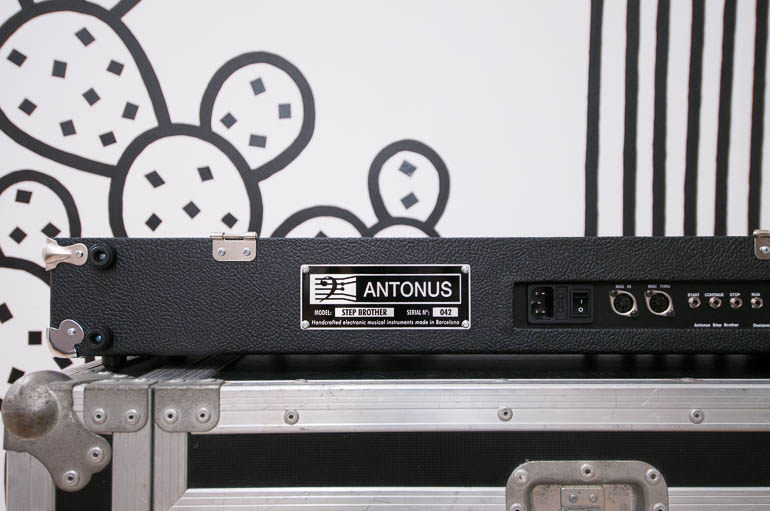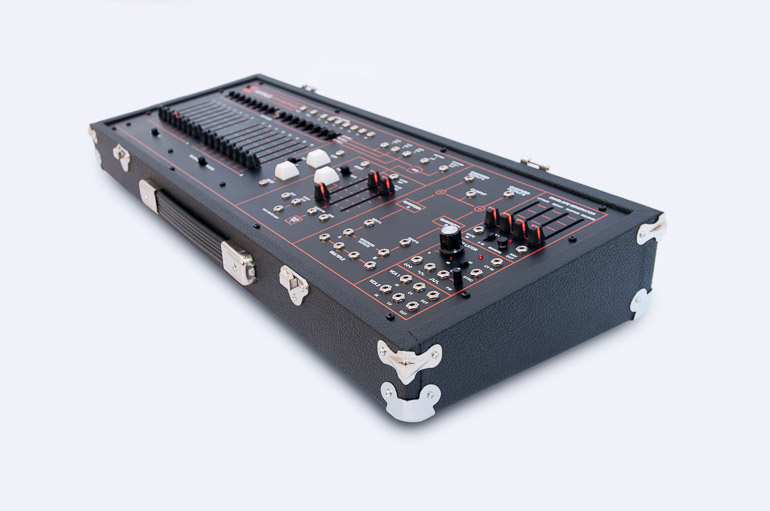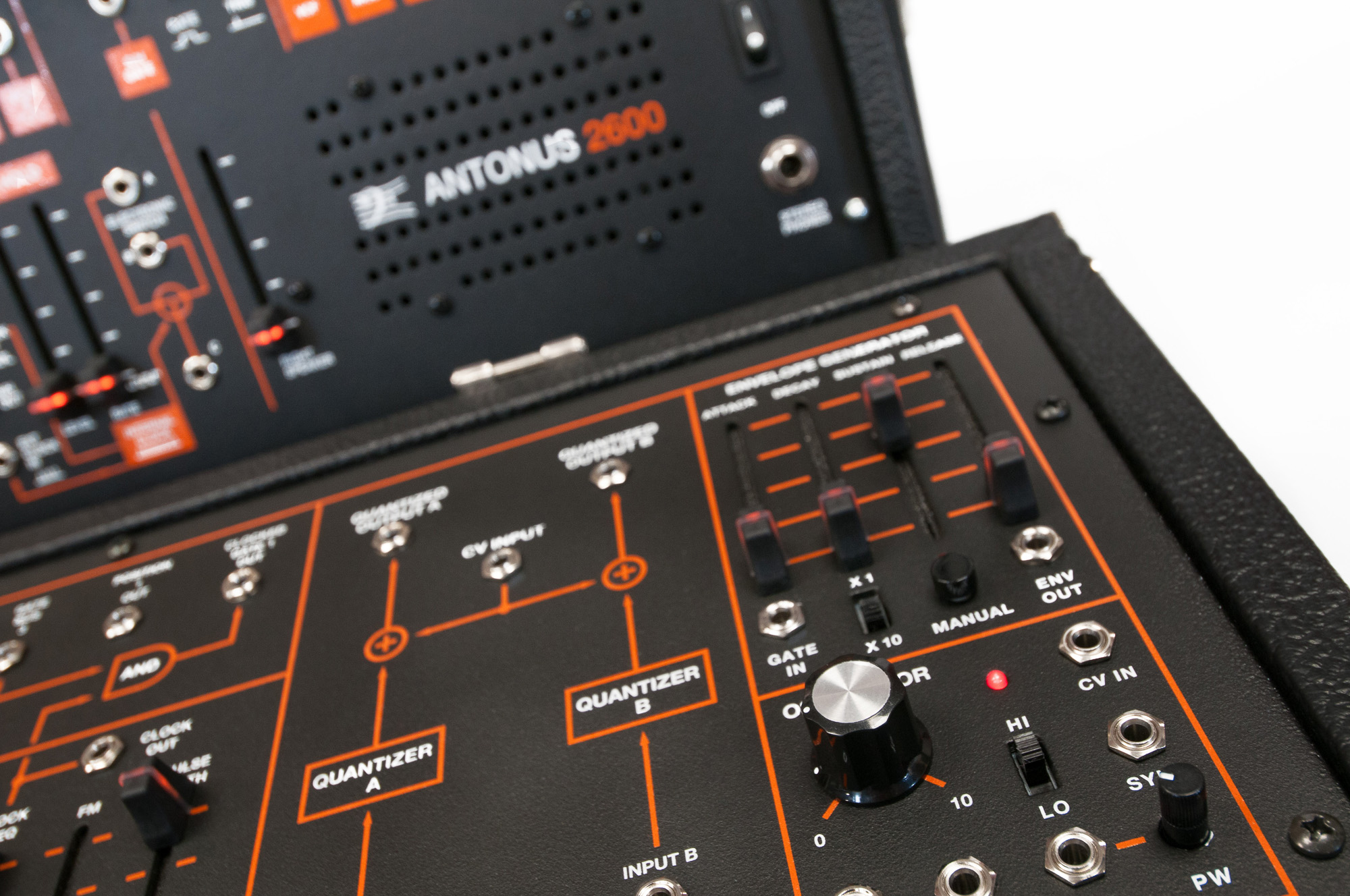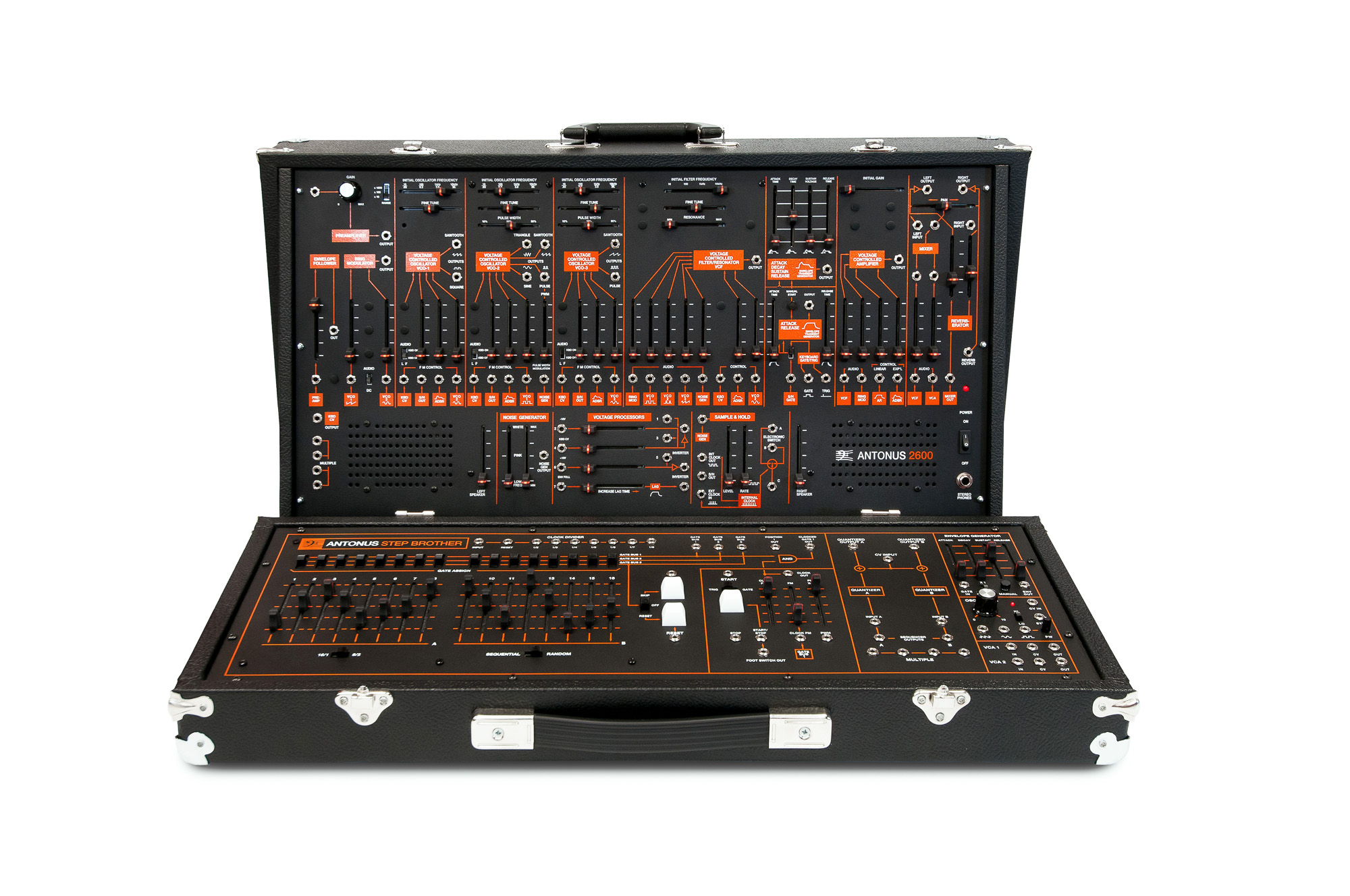Antonus Step Brother – following the path
The ARP 2600 was a unique and inspiring concept that it motivated the development of the Antonus 2600 to continue providing that experience to new users today.
It is known that ARP continued to manufacture several devices that are well remembered today, but all had a design and intention that was different from the 2600 concept.
In fact, only equipment that fulfilled the role of system expansion such as the ARP Little Brother was launched, which in addition to being a fairly simple device was already developed with a cabinet design different than 2600.
A device that fit very much as an expansion of the 2600 was the mythical ARP Sequencer but once again the structural design was already away from the 2600 design.
One of the great attractions of the ARP 2600 in addition to its characteristic sound was its aesthetics and design. Unfortunately for the lovers of that first design in later developments of ARP they did not follow that philosophy of mixing instrument and sound laboratory with cabinet made with aesthetics of classic musical instrument case.

With the idea of retaking the concepts of 2600 expansion and continuing that design line, the idea of the Step Brother sequencer began to born. The concept is to combine the sequencing qualities of the classic ARP Sequencer, with the idea of expansion that the Little Brother had, and taken to a higher level of performance to present all this with the same design line as the classic 2600.
We are happy in Antonus to have mixed all these ideas and after much work polishing the idea to present the Antonus Step Brother. The users of Antonus 2600 and the users of the classic ARP 2600 can find the perfect match in performance and spirit to continue expanding the 2600 experience today.
But also people who do not have a 2600 system can use and enjoy the experience provided by the Step Brother, since it is fully compatible with current analog systems and will synchronize perfectly with MIDI digital systems. The Step Brother design also aims to be an important complement to any instrument setup of today as well as even having a number of resources that makes it an stand alone instrument by bringing together features such as control, sequencing and sound generation all together, which it did not happen in the different devices in which Step Brother is inspired.

Respecting the origins – 100% analog once again
The Step Brother is designed and built with 100% analog technology without using any type of processing or CPU. The only digital part is used in the microcontroller of the MIDI signal converter to precisely translate the digital instructions into voltage control signals.
The sequencer design is based on classic CMOS technology, which makes logic work from a very essential point of view not using CPU. With this, we not only respect the essence and behavior of the instrument origins, but we also ensure the absence of typical computer processing problems, such as connection limits, aliasing or hangs while playing.
The rest of Divisors, ADSR, Oscillator and VCA elements are completely analog, their behavior and sound being totally faithful to the idea and the instrument spirit.
Design true to the origins
The design and style of the cabinet is true to the 2600 concept, using Tólex and metal hardware both in the cabinet and in its front cover. The idea of the style of the cabinet was respected in spite of the work and costs that this part presents, because precisely we consider that it is part of the special spirit of this instrument and a point that makes it stand out among the designs of synthesizers and current equipment.
Anyone who sees a closed Brother Step will wonder what instrument is stored in there.
The measures are designed in relation to the proportions of the Antonus 2600 so that it feels like a continuation of the main synthesizer from the first moment they are coupled together. Either in an angle configuration or when we engage in a vertical configuration using Antonus connection brackets.
The front panel follows the black textured line with white silkscreen printing. The texture and slikscreen have extra treatment to withstand marks and stains for everyday use.

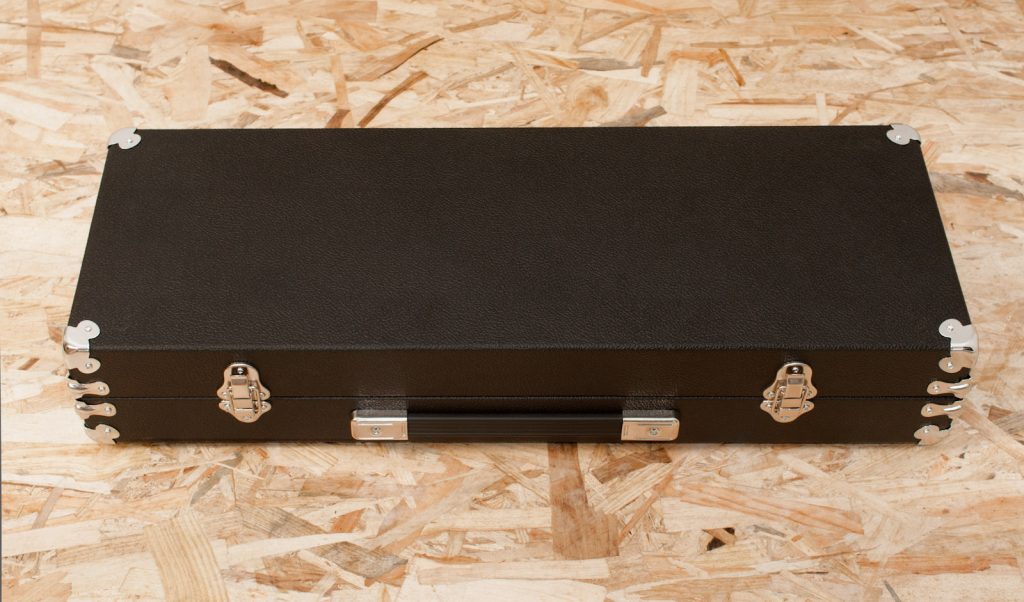
One of the design highlights of the ARP Sequencer in which the Step Brother is inspired is the clarity and comfort of the different elements, which favored the creativity and the speed of use and learning of the instrument in a very direct and musical way. In the Step Brother we have worked adding the new features so that they respect that rule of comfort and clarity of use of controls and connection.
Match with your classic ARP-ORANGE instruments
Also available the classic orange scheme panel for match even more with your classic ARP instruments. Price is the same, you only need to specify what panel color do you prefer for panel, the Antonus standard or the classic Orange-ARP. Of course you can combine this panel with the different led lights and different Tolex colors. Even more combinations available!
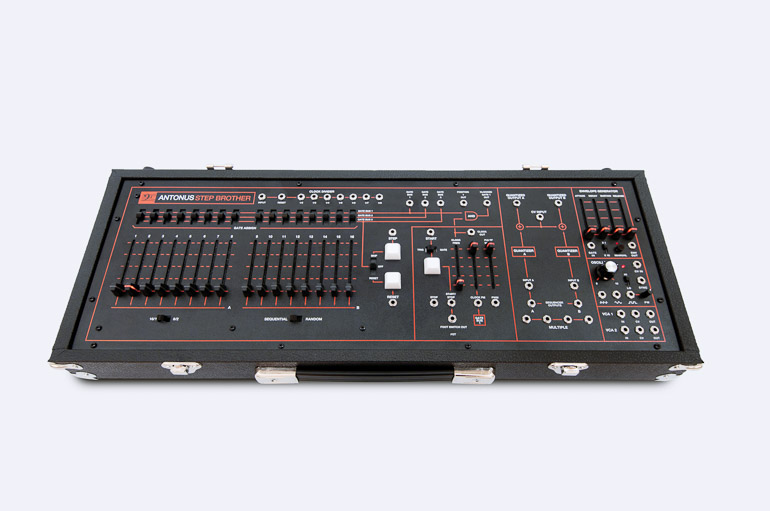

¿so what’s new?
The design of the ARP Sequencer is the base of the sequencer part of the Step Brother, but now a clock divider (or frequency divider) has been added to exponentially raise the musical possibilities.
And for the”Little Brother” concept we choose to add a full analog ADSR envelope generator with time factor multiplier, a completely analog VCO that works in both LFO and high frequency ranges. In high frequency it is controllable by the standard volt / octave.
To finish the idea, two high-quality VCA’s were added that allow working with AC and DC voltage signals.
Although we have described these elements as if they belonged to a part of the Step Brother, the idea is that all the elements feel as a whole in the instrument, that one can really use and interconnect their resources to control, sequence or generate audio, going beyond the limitis of each concept. For example, someone can use the oscillator as an audio or as an LFO to modulate, the VCAs to process sound or to control a logic or rhythmic part, the clock divider as a time divider or a multiple sub-oscillator generator … etc. Even the sequencer itself can be transformed into a graphic oscillator! We recommend reading the manual to understand the versatility in the relationship of all the elements of the Step Brother


Classic connections with today’s standards
The Step brother have MIDI input to synchronize via MIDI clock. At the same time it allows the conversion of different parameters such as the converted MIDI clock output to “analog” clock output as well as other possible conversions. In this way the Step Brother can even act as a MIDI to clock converter so that other devices that lack MIDI clock can synchronize without problems.

Technical features summary
The technical features of the Antonus Step Brother are detailed in its corresponding manual.
The download link is :
Antonus Step Brother is handcrafted made in Barcelona with love and care.
For order or reserve please use the purchase button to show you details for order it.

